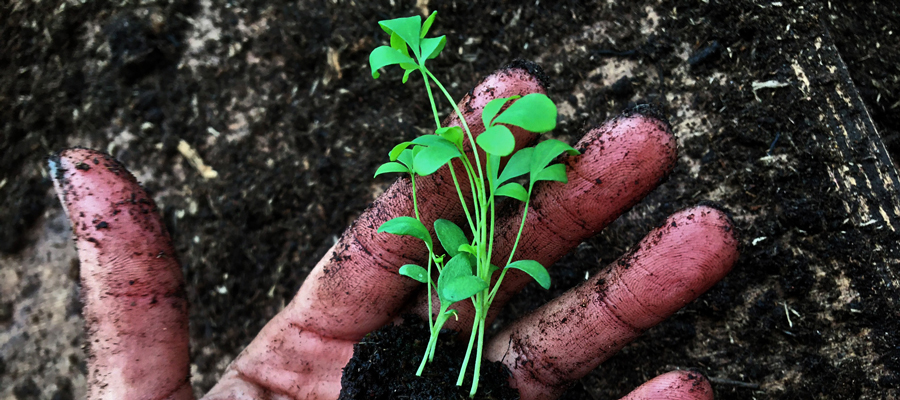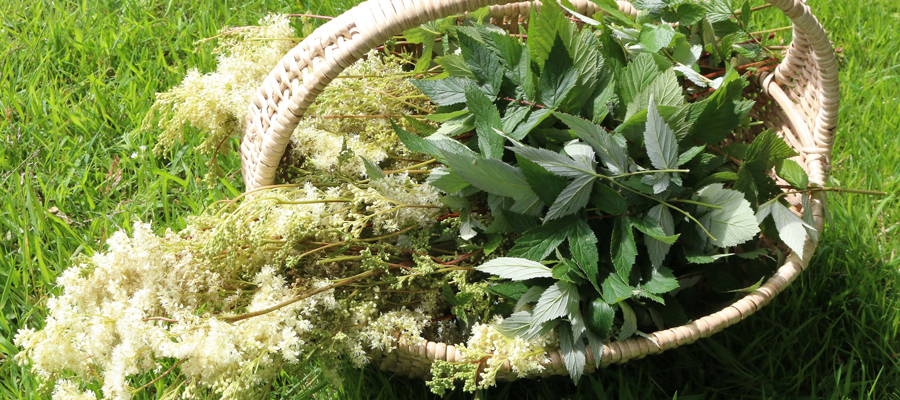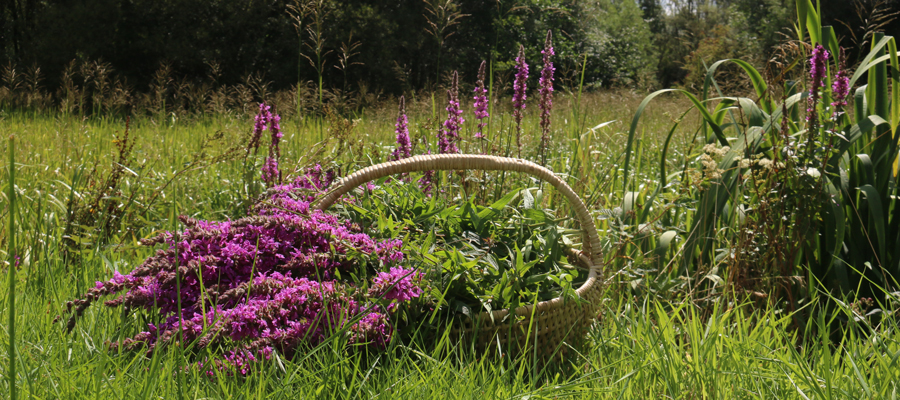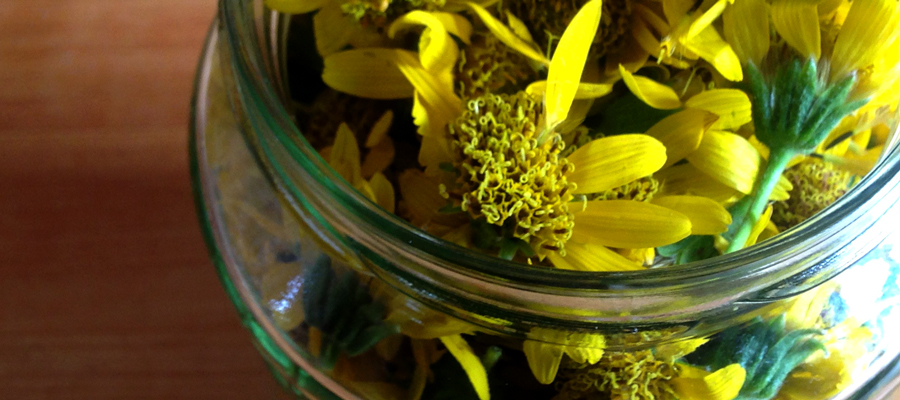Many of our colleagues ask us how we manage to grow and process most of the herbs we use in our clinical practice. The idea of having a sustainable dispensary certainly is appealing to most herbalists. Having the time, space and additional skills to achieve this may seem daunting to any practicing herbalist but we know there are always ways in which any herbalist can add to your repertoire of remedies without taking the full plunge into herb farmer!
Getting back to your proverbial roots as a herbalist is not only beneficial to your dispensary. It is a profoundly connecting way to engage with the plants you already have a deep appreciation and reverence for. It opens channels of communication with yourself and the plants that will enhance your work as an intermediary between the herbs and your patients.
Traditional herbal medicine practitioners will tell you never to underrate the power of simplistic remedies. The popular use of tinctures alone in clinic is indeed practical and gives us access to incredibly powerful medicines when we tailor them to the individual. But the back to basics uses of herbal oils, liniments, creams, lotions, balms, oxymels and teas and decoctions as hand and foot baths adds a greater component to practice and to your patient’s relationship with the healing process. And more importantly, to our own rapport with the plants as medicines. The use of these simple remedies empowers our patients to connect with their own healing, the art of self-care and the value of nourishing oneself towards better health.
Many of us have seen how positive this is for people. I am reminded of a patient that went from being embarrassed to make up his herbal tea mix in front of his co-workers during lunch break on the building site to proudly encouraging them all to ditch the coffee for herbals. And another patient, who loved the herbal skin cream made for her condition so much that she came to train with us and ended up going on to start her own natural skincare range. Connecting the people in our care with the plants, I feel, is fundamental to my role as a herbalists and clinician.
It is for this reason we love teaching this aspect of herbal medicine to fellow herbalists. For many years we have taught colleagues how to integrate growing medicinals and making remedies into their practice. We have had the pleasure and privilege of teaching colleagues of over 20 years’ experience to new student herbalists. Each wishing to broaden their repertoire of offerings as practitioners, and to develop their own sense of what being a herbalist could mean.
So what are the most important points to share here?
The key is to start small and focus on a handful of simple remedies that you feel will add the most value to your clinic. Build your confidence working with these plants before embarking on bigger quantities or trickier plants. Some herbs grow very easily for any novice gardener while others need special care and knowledge to successfully grow them to producing medicines. So how do you decide?
Firstly, ask yourself ‘what do you need?’ In clinic, we tend to be more au fait with using certain herbs. We feel more comfortable in our understanding of their use and this short list often become our ‘go to’ herbs. When we create these relationships to a particular herb, we also tend to attract the people that need that plant! Something I am sure many of you have felt in practice. Nervines are a good example. There are so many wonderful nervines yet we each tend to have our favourites.
So, take a look at your dispensary. Do you end up using multiple litres of some and less than half a litre of others in the space of a year? Are these favourites plants you could grow?
Let us take Scutellaria and Leonurus as an example. If you know you use 3 litres of Leonurus tincture a year you only need 1 plant in your garden to fulfil this! Although it is a big, tall plant it is easily grown, needs the minimal of maintenance being a perennial. Whereas to make 3 litres a year of Scutellaria tincture needs a lot more space (about 1m x 1m of preferably rich and moist ground) and very specific care to ensure it will thrive. Each year your Skullcap patch will need to be completely dug up, removing about a third of the roots and replanting the rest in the same place. This is a simple task that doesn’t take much time. Without doing this each year your Scutellaria will strangle itself underground and you will end up wondering why it didn’t come back or why it grows poorly the next year.
Plants of which we use aerial parts would be easiest to focus on first whereas most roots take more time to mature for harvest. There are however, some rewarding root herbs you could begin with we harvest in its first year. Growing your own Withania in a glasshouse/polytunnel and harvesting the roots in the first winter is very rewarding. Other roots like Valeriana and Angelica spp. are also best taken up in the first year of growth as they can fail to survive our damp winters. There is nothing as strong as your own Valerian or Angelica root. For other roots like Rhodiola or Gentiana you will be waiting a number of years but in that time, you have a stunning plant to admire and connect with.
So depending on the space you have you need to decide what time you can commit to growing some herbs. I urge herbalists without much growing space to join a community garden group or rent an allotment. You would be surprised how productive an allotment can be. A community gardening group would be more than happy to take on growing herbs which you and they can all avail of come harvesting time. You get the expertise of some more experience gardeners plus the needed ground space and in turn they get your knowledge as a herbalist. A lovely exchange can he had. Ross and I spent many years doing free talks at our local community gardening groups. In exchange we could harvest large quantities of plants like Sea Buckthorn or Dog Rose which we did not have growing on our own farm.
But let’s take a step back from fresh tinctures. Some herbalists do not wish to take on tincturing. There are many other wonderful and valuable medicines to make to enhance your dispensary which you do not need to do any gardening for.
I often encourage herbalists to first embark on making herbal vinegars. These are a superb addition to your dispensary. In practice we combine them freely with tincture formulas to great effect. They are potent remedies, yet most herbalists do not use litres and litres of them in the same way we do tinctures. Many of the most valuable vinegars you could make are wild plants which cuts out the horticultural skill or garden space. Our top vinegar extractions made from wild plants are: Galium, Urtica, Filipendula, Sambucus flower and berry, Rosa spp. hip, Sea Buckthorn berry and Blackberry. Some of these also make wonderful oxymels.
If connecting to a gardener is not an option honing your skills in wild crafting herbs is essential. There are many guides on proper foraging rules which must be adhered too especially when wild crafting for medicines. Correct identification is also crucial!
Focusing on wild plants is a great way to start drying some herbs. Your own Tilia blossoms, Crataegus flowers or berries dried well in small batches is like nothing you can ever purchase from suppliers. Over the years we built many herb dryers to suit our needs. Starting small with a stacked food dryer works very well. Drying yourself for teas in clinic may seem impossible because of quantities so begin drying some for your own personal teas. Doing this gives all herbalists a new appreciation for the time and effort that goes into a tiny amount of dried herb!
From our experience working in large scale herbal medicine farming and production a note of caution must be said about buying in dried herb. Adulterants in the herbal industry is common! The herbs for clinic we simply cannot grow in this climate we buy in dried to process. Trusting your supplier, using your own organoleptic skills, and asking for certificates of analysis is key.
If you are a keen cream, lotion and balm maker there are many wild plants you can make herbal oils from. This is so satisfying. When it comes to treating musculosketal conditions having a range of oils to work from is valuable. External applications have an astounding effect on these conditions. Providing your patients with the tools to use topical herbal treatments brings us back to the importance of self-care.
Oils we like to make from wild plants include: Taraxacum flower, Bellis flower, Stellaria, Filipendula, Pinus tips, Betula leaves and Geranium robertanium. Cultivated plants include: Symphytum root and leaves, Calendula, Hypericum, Lavandula, Rosmarinus and Arnica. We use both the cold extraction method and the hot infused oil extraction method for these. For small quantities for your own clinical practice a crock pot is very useful for hot oil extractions.
As you become more and more confident with your processing skills you can create some very potent bespoke oils that become invaluable to your practice. An example is a mixed oil we make each year from fresh Rosemary flowering tops, Calendula flowers, Achillea leaves, Echinacea heads and Plantago leaf. We call this our Itchy Bitey Oil! We use it as an oil alone or add a little beeswax to make a quick healing balm. I regularly dispense this balm to patients for all manner of mysterious skin rashes and bites. In our house, with 3 young kids, this is an essential first aid balm.
We grow over 200 species of plants at Ivywood for medicines. When asked by herbalists where to begin I would recommend this top 20 to begin your medicine growing and making adventure with: Achillea millefolium, Melissa officinals, Leonurus cardiaca, Atremisia vulgaris, Eupatorium perfoliatum, Solidago virguarea, Verbena officinalis, Verbascum thapsus, Symphytum off., Matricaria recutita, Inula helenium, Mentha spp., Occimum, Stachys betonica, Scutellaria laterifolia, Calendula off. and Hypericum perforatum.
We feel it is an absolute privilege to be on this journey as herbalists and herb growers. It is filled with endless learning, personal growth, and joy. Even after many years of growing a particular plant it will continually surprise and astonish you. As you change and grow so does your connection with the plants. It appears that the plants are there, patiently waiting for you to be ready so they can reveal new facets of themselves. As herbalists you have already taken the plunge to commit yourself to the plants - the next step could be as simple as surrendering to their guidance!












